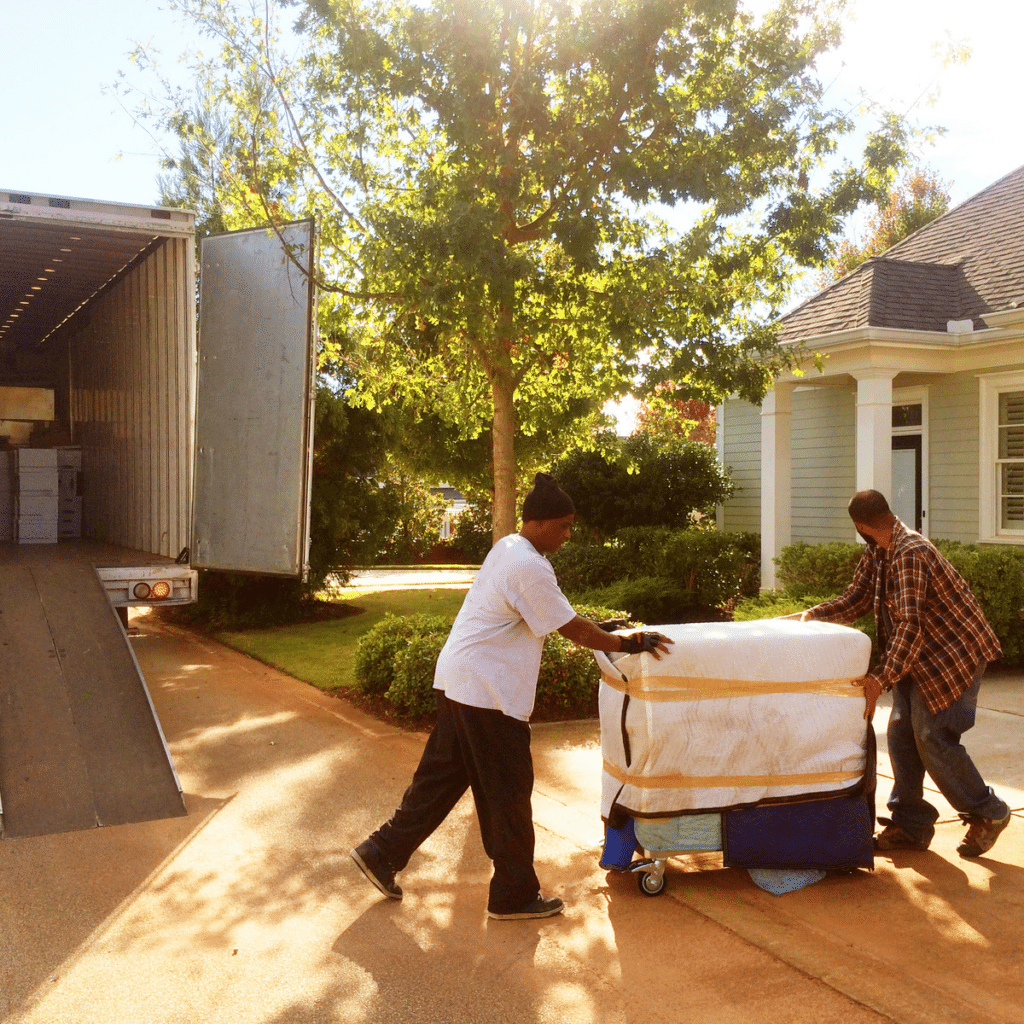Moving can be a stressful experience, particularly when it involves handling sizable belongings. Whether you’re moving to a residence or office, ensuring the secure transportation of these items necessitates planning and expertise. In this post, we’ll share advice from movers on how to move large and fragile items safely. By following these suggestions, you can minimize the risk of damage and enjoy a moving process.

1. Prioritize Planning
Before embarking on the moving process, most professional movers advise that it’s crucial to plan in advance and create a checklist of all the fragile items that require attention during the move. This includes furniture, appliances, electronics, artwork, antiques, glassware, mirrors and other delicate objects. Once you’ve identified these possessions, determine the packing methods and transportation arrangements.
2. Opt for High-Quality Packaging Materials
Investing in top-notch packaging materials is essential for safeguarding your fragile belongings during transit. Seek out cardboard boxes specifically designed for moving purposes. These boxes are typically reinforced to withstand loads without breaking or bending. It’s also important to make sure you have bubble wrap, packing paper, foam peanuts, furniture pads/blankets, mattress covers, stretch wrap/plastic film wrap (to secure parts), packing tape (heavy duty), and labels/markers for proper labeling.

3. Take Apart Pieces of Furniture
One way to ensure the safe transport of large furniture pieces is by disassembling them whenever possible. Remove any parts that can be easily detached, like table legs or bed frames. This allows each piece to be securely wrapped in blankets or padding material for added protection against bumps or scratches during the move.
4. Utilize Padding Techniques
When it comes to moving items such as glassware, ceramics, or mirrors, it is crucial to use proper padding techniques in order to minimize potential damage. To effectively protect your belongings:
a) Individually wrap each item with bubble wrap or packing paper. Make sure to provide padding around any areas like edges or handles.
b) Place these wrapped items inside boxes, ensuring a fit without too much additional space.
c) To prevent any shifting during transit, make sure to fill any remaining spaces in the boxes with foam peanuts or crumpled-up packing paper.
d) Clearly label each box, indicating its content and whether it contains fragile items.

5. Securing Electronics
Electronics are not only delicate but also contain components that require handling. Before packing them for transportation:
a) Safely disconnect all cords and cables from your devices. If needed, label them to make reassembly easier later on.
b) Wrap each device using static bubble wrap or special electronic packaging.
c) Place the electronics in a cardboard box lined with foam peanuts or other cushioning materials. Ensure they fit snugly within the box to prevent movement during transit.
d) Seal the box securely and mark it clearly as “fragile” and “electronic.”
e) Keep in mind that certain electronics may require assistance for disconnection, packing, and reinstallation at your new location.
6. Considering Professional Help
Moving fragile items requires expertise possessed by professional movers. They have the experience, equipment, and techniques to handle these belongings safely.
When it comes to moving valuable furniture or antiques, it’s worth considering hiring movers who specialize in handling fragile items. They have the expertise to ensure a transition for your possessions from one location to another.

7. Label and Handle with Care
Proper labeling and handling are crucial when it comes to moving large and fragile items. Follow these additional tips to ensure their safe transport:
a) Clearly label each box containing fragile items with the word “fragile” on all sides. This will alert movers or anyone helping you move to handle these boxes with extra care.
b) Communicate the importance of careful handling to everyone involved in the move. Provide instructions on how to lift, carry, or maneuver different types of delicate items.
c) When loading and unloading fragile items, use equipment specifically designed for moving, such as furniture dollies, straps, or sliders. These tools minimize the risk of dropping or damaging heavy objects.
In conclusion, moving fragile items can present challenges. By following these expert tips, you can make the process more manageable. Planning ahead using quality packaging materials, employing padding techniques, securing electronics properly, and seeking assistance when needed will help you transport your delicate items without unnecessary stress or damage. Remember that investing time in handling these possessions is worthwhile in the long run.


